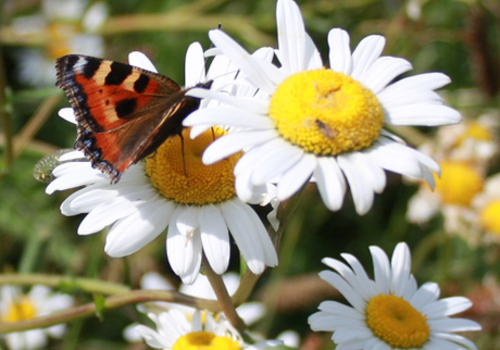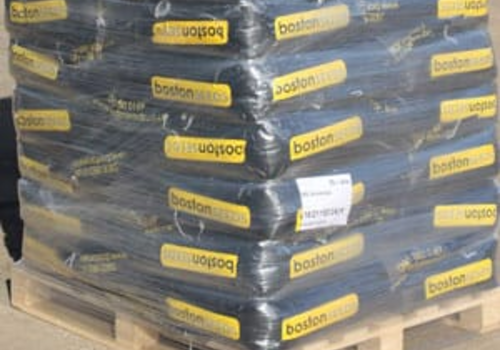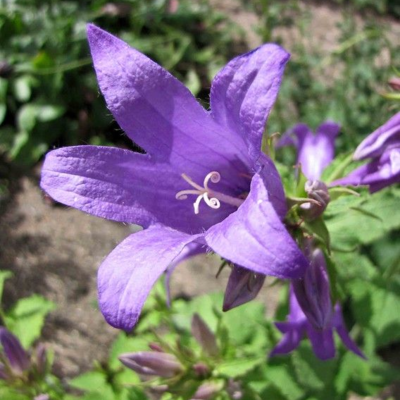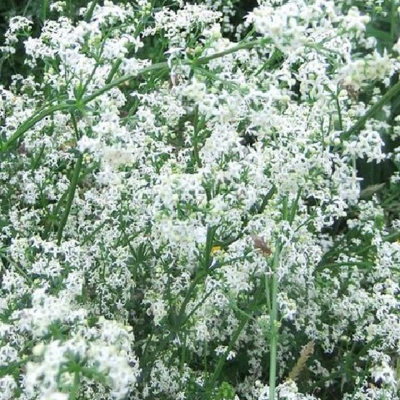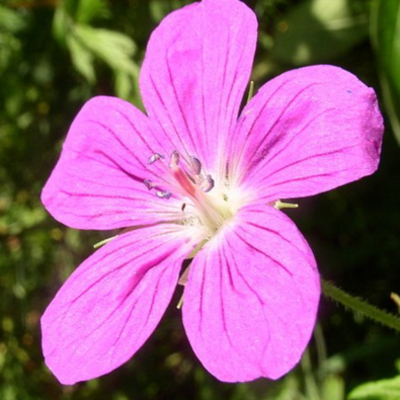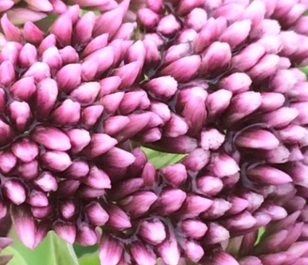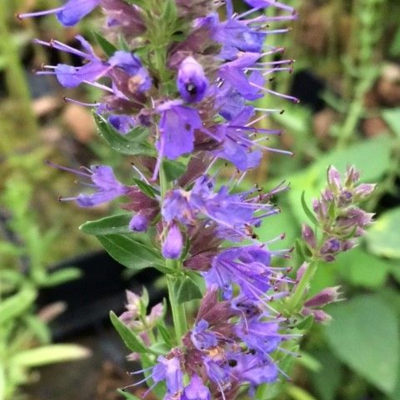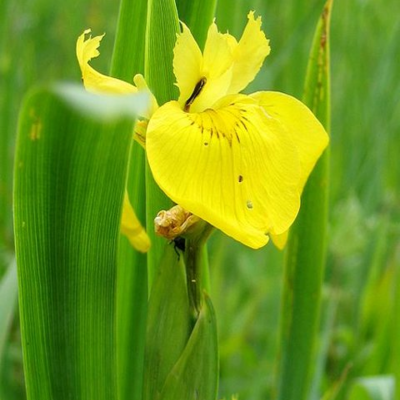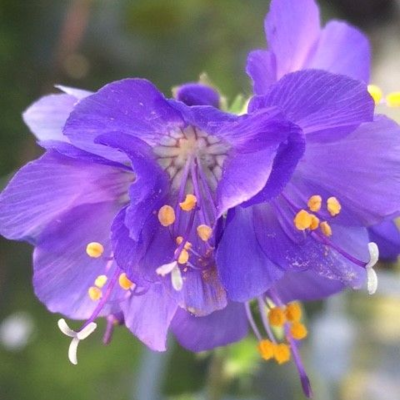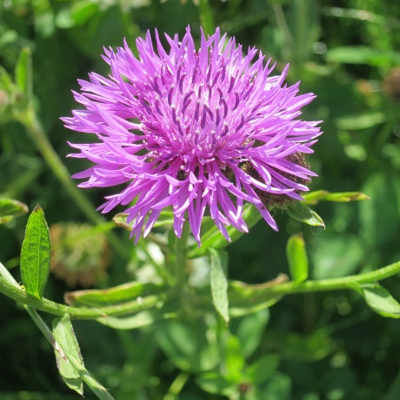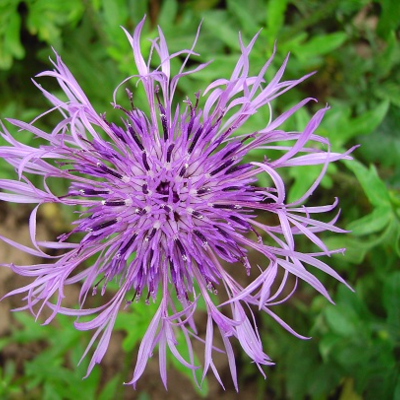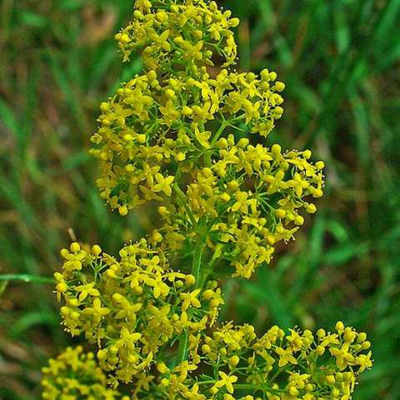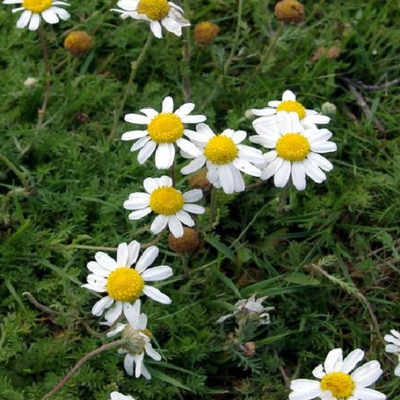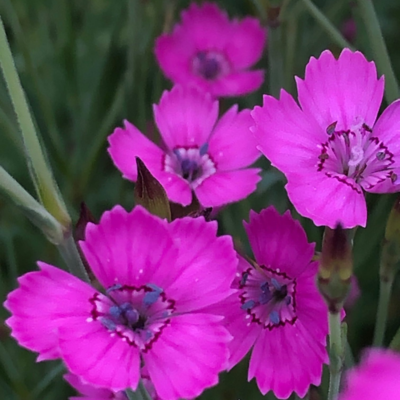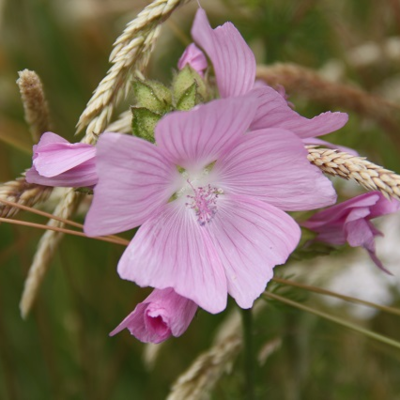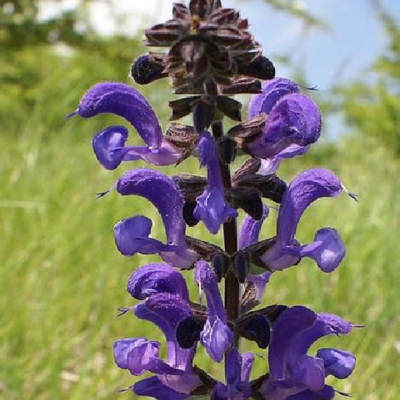Wildflower Plants A to Z
Choose from our entire range of over 100 wildflower plug plants, expertly grown in our very own nursery from high quality, UK native wildflower seed. Our wildflower plugs are ready to be planted straight out into your garden or meadow as soon as they arrive, all year round. Buying individual wildflower plants is one of the best ways to establish your chosen wildflower species, planted individually or as part of a more diverse meadow created from our range of wildflower seeds.
Don't hesitate to get in touch to speak to one of our experts or request a catalogue to view our full range. Ordering regularly or looking for large volumes? Click here to apply for a trade account today - we review all applications within one working day.
This large species of bellflower produces petals in purple and periwinkle blue. Ideal for woodland gardens and lighting up shady spots, it’s hardy and easy to naturalise!
- Type: Perennial
- Height: 90–150cm.
- Flowers: June-September
- Soil Requirement: Well-drained
- Light Requirement: Partial to full shade
- Natural Habitat: Woodlands, hedge banks
- Also known as: Brantwood, Large Campanula
This item is currently unavailable
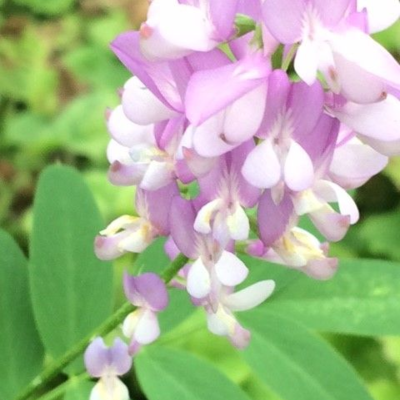

Plants for Pollinators highlights plants selected by the RHS as scientifically proven to tackle the declines in bees, butterflies and other pollinators.
Goat's Rue is a medium to tall plant with lilac-to-lavender petals in the shape of small sweetpeas. While it was previously grown readily as forage and medicinal crop, it's nowadays seen as an excellent ornamental plant that is attractive to a variety of insects as a food source.
- Type: Perennial
- Height: 100-150cm.
- Flowers: July to September
- Soil requirement: Moist but well-drained
- Light requirement: Full sun or partial shade
- Natural habitat: Damp meadows, river banks
- Also known as: French Lilac, Professor-Weed, Italian Finch
This item is currently unavailable
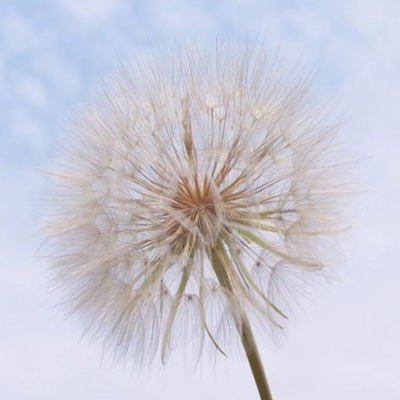

Plants for Pollinators highlights plants selected by the RHS as scientifically proven to tackle the declines in bees, butterflies and other pollinators.
Haven’t you herd? These buttery-yellow blooms framed by sharp green phyllaries have a lot in common with the famous dandelion, up to its famously fluffy, shiny sandy-silver seed heads later in the season for which they’re named. However, this hardy herb is a lot more showoffish, growing fairly tall in just about any environment. An early bloomer that closes later in the day, but when it blooms, it truly is outstanding in its field!
- Type: Perennial
- Height: 30–90cm.
- Flowers: May-July
- Soil Requirement: Moist or well-drained
- Light Requirement: Full sun or partial shade
- Natural Habitat: Grasslands, meadows, roadsides
- Also known as: Clock Flower, Johnny-Go-To-Bed-At-Noon, Salsifex
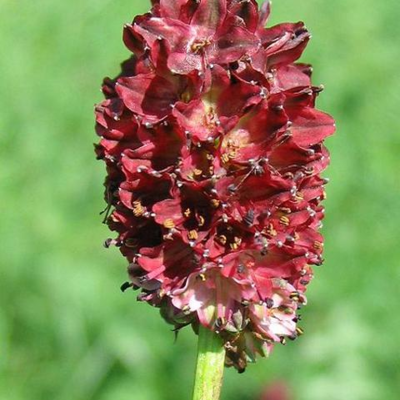

Plants for Pollinators highlights plants selected by the RHS as scientifically proven to tackle the declines in bees, butterflies and other pollinators.
The Great Burnet is a lively-looking plant, sporting crimson flower clusters atop tall, branching stems with distinct jagged leaves. They’re highly attractive to pollinators, and for a good reason; this wild-growing relative of the rose is not to be overlooked!
- Type: Perennial
- Height: 45-90cm.
- Flowers: June-September
- Soil Requirement: Moist but well-drained
- Light Requirement: Full sun or partial shade
- Natural Habitat: Floodplains, meadows, riverbanks
- Also known as: Burnet Bloodwort
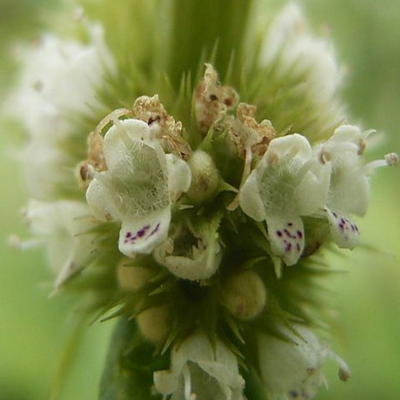

Plants for Pollinators highlights plants selected by the RHS as scientifically proven to tackle the declines in bees, butterflies and other pollinators.
Growing tall with distinct, spear shaped and toothy leaves, this whimsical wetland plant has a softer side in its clustered stems of miniature ivory petals, scarlet-spotted lower lips. An excellent plant for pollinators, and makes for a pretty pondside palette!
- Type: Perennial
- Height: 50-100cm.
- Flowers: July-September
- Soil Requirement: Moist
- Light Requirement: Full sun or partial shade
- Natural Habitat: River banks, stream sides
- Also known as: Bugleweed
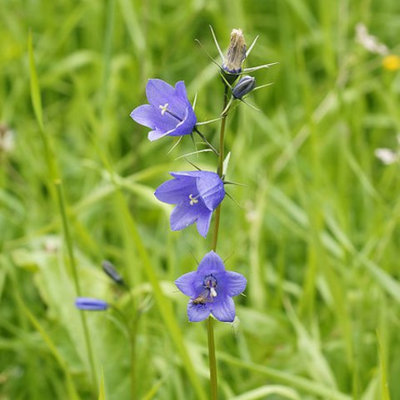

Plants for Pollinators highlights plants selected by the RHS as scientifically proven to tackle the declines in bees, butterflies and other pollinators.
Though dainty by appearance, these papery bells of blue beauty on slender stalks are actually remarkably resilient to the elements, and thus we recommend that you let this well-loved wildflower run through rockeries, and avoid overcrowding them.
- Type: Perennial
- Height: 15-45cm.
- Flowers: June-September
- Soil Requirement: Well-drained, sandy
- Light Requirement: Full sun
- Natural Habitat: Hillsides, coastal areas,
- Also known as: Cuckoo Shoe, Heath Bells, Scottish Bluebell

Plants for Pollinators highlights plants selected by the RHS as scientifically proven to tackle the declines in bees, butterflies and other pollinators.
A rambling, hairless hedge plant, which produces clusters of tiny, star-shaped flowers in fresh white. Noted for its sweet scent, this vigorous wildflower can grow quite tall when clambering alongside hedges and shrubs.
- Type: Perennial
- Height: 30–75cm.
- Flowers: July-August
- Soil Requirement: Well-drained, calcarerous
- Light Requirement: Partial shade
- Natural Habitat: Woodlands, grasslands, hedgebanks
- Also known as: False Baby’s Breath, Whip Tongue, Wild Madder
Hedge Cranesbill is a sublime, showy species of wildflower, its lobed petals a perfect palette of glowing pink and mellow purple, often with darker-coloured veins. This fuchsia firework of a flower is long-flowering and hardy, meaning it’ll grace your garden for a long time.
- Type: Perennial
- Height: 20–45cm.
- Flowers: April-May
- Soil Requirement: Well-drained
- Light Requirement: Partial shade
- Natural Habitat: Meadows, woodlands, road verges
- Also known as: Hedgerow Cranesbill, Mountain Cranesbill
A tall-growing upright marsh flower, which grows plentiful parachutes of pink-and-white florets on red stems, and they’re also known for their pleasant perfume when cut. This whimsically-coloured wildflower is also perfect for pollinators!
- Type: Perennial
- Height: 60–120cm.
- Flowers: July-September
- Soil Requirement: Damp
- Light Requirement: Full sun or partial shade
- Natural Habitat: Marshlands, river banks
- Also known as: Hemlock Parsley, Holy Rope, Raspberries-And-Cream, Water Agrimony
Hyssop is a herb related to the mint, with aromatic leaves which are sometimes used for flavouring and medicine. It looks just as sweet, producing spikes of petals from vivid violet to royal blue and even white. A delightful bit of eye candy that's also attractive to pollinators and easy to grow.
- Type: Perennial
- Height: 40-60cm.
- Flowers: July-September
- Soil requirement: Moist or well-drained
- Light requirement: Full sun or partial shade
- Natural habitat: Grassland, meadows, roadsides
The Yellow Flag Iris is thought by some to be the original fleur-de-lis, a symbol of heraldry and royalty. And while the golden, three-petalled flowers and blade-like leaves are regal indeed, its true name is just as appropriate, as this water-resistant plant grows on tall, branching stems which display its beautiful blooms like flags waving in the wind. Recommended as a pond-side plant.
- Type: Perennial
- Height: 100-150cm.
- Flowers: May-August
- Soil Requirement: Moist
- Light Requirement: Full sun or partial shade
- Natural Habitat: Marsh, flood planes, ditches
- Also known as: Flagon, Water Flag, Yellow Fleur-De-Lis
The county flower of Derbyshire. Jacob's Ladder gets its name from its climbing, ladder-like foliage. Produces lavender blue, bell-shaped flowers form in clusters at the top of its tall, slender stems.
- Type: Perennial
- Height: 50-100cm
- Flowers: June - July
- Soil requirement: Moist but well-drained
- Light requirement: Full sun or partial shade
- Natural habitat: North facing areas, limestone hillsides, old meadows
- Also known as: American Great Valerian, Charity, Ladder to Heaven

Plants for Pollinators highlights plants selected by the RHS as scientifically proven to tackle the declines in bees, butterflies and other pollinators.
These thistle-like florets of magenta atop maroon flower heads are an excellent pick for any garden, despite their prickly appearance: Not only are they super hardy, they're vital in wild meadows for supporting weaker wildflowers, and they're also attractive to butterflies and bees!
- Type: Perennial
- Height: 30-60cm.
- Flowers: June-September
- Soil Requirement: Well-drained
- Light Requirement: Full sun or partial shade
- Natural Habitat: Grasslands, forest verges
- Also known as: Bell Weed, Hardhead, Tassel

Plants for Pollinators highlights plants selected by the RHS as scientifically proven to tackle the declines in bees, butterflies and other pollinators.
Greater Knapweed is hardy and tall-growing, and helps to bring in butterflies. We recommend complimenting its sharp and showy, thistle-like flowers with a similarly starburst-shaped scabious, or use softer shapes to and colours contrast with specimens such as the ox-eye daisy or mallow.
- Type: Perennial
- Height: 40-90cm.
- Flowers: June-September
- Soil Requirement: Well-drained
- Light Requirement: Full sun or partial shade
- Natural Habitat: Grasslands, cliff-sides
- Also known as: Black Top

Plants for Pollinators highlights plants selected by the RHS as scientifically proven to tackle the declines in bees, butterflies and other pollinators.
The Lady’s Bedstraw is a hardy, sprawing plant which bears vast whorls and clusters of tiny golden flowers. It also boasts a distinct and sweet scent, even when dried: its unusual name originates from its use to scent bedding in Victorian times.
- Type: Perennial
- Height: 15-30cm.
- Flowers: June-September
- Soil Requirement: Well-drained
- Light Requirement: Full sun or partial shade
- Natural Habitat: Grassy meadows, road verges, clifftops and hills
- Also known as: Maiden’s Hair, Fenwort, Cheese Rennet
This item is currently unavailable
An amazingly aromatic alternative to common grass or daisy lawns, this low-growing, daisy-like flowers make for a pleasing ground cover that is easy to maintain once established, but sensitive to trampling. Plant plugs in full sunlight at least 10cm apart.
- Type: Annual
- Height: 10–20cm.
- Flowers: June-August
- Soil Requirement: Well-drained
- Light Requirement: Full sun
- Natural Habitat: Lawns, grasslands
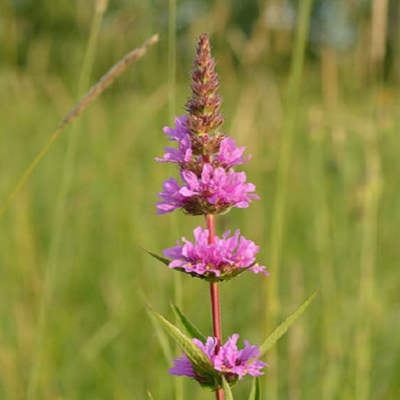

Plants for Pollinators highlights plants selected by the RHS as scientifically proven to tackle the declines in bees, butterflies and other pollinators.
A robust marsh flower which produces tall plumes of magenta blooms. Perfect for the pondside- let them loose and enjoy these sensational spikes of colour as they bring in bees!
- Type: Perennial
- Height: 60-120cm.
- Flowers: June-September
- Soil Requirement: Moist
- Light Requirement: Full sun or partial shade
- Natural Habitat: Marshes, riverbanks, fens
- Also known as: Black Blood, Rainbow Weed, Red Sally
The county flower of Roxburghshire is certainly well-named, as its toothy, cerise pink flowers with deep-rose central markings are among our most vivid, and carry all the allure of a fairytale maiden. Recommended for rockeries, this bloom's beauty is easy to get lost in, growing in clusters in a mat of dark silver-green foliage.
- Type: Perennial
- Height: 10-15cm.
- Flowers: May-August
- Soil requirement: Well-drained
- Light requirement: Full sun
- Natural habitat: Hillsides, pastures, dry banks
- Also known as: Lady's Cushion, Meadow Pink, Spink
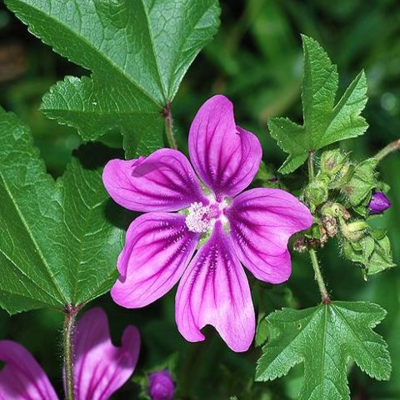

Plants for Pollinators highlights plants selected by the RHS as scientifically proven to tackle the declines in bees, butterflies and other pollinators.
There's many a reason to plant the tough, adaptable and hearty bloom that is mallow: cherish it for its heart-winning, heart-shaped pink petals veined with violet, or for its numerous medicinal and culinary uses; it's a flower that promises to please in many different environments.
- Type: Annual or Biennial
- Height: 30-90cm.
- Flowers: June-September
- Soil Requirement: Moist but well-drained
- Light Requirement: Full sun
- Natural Habitat: Meadows, road verges
- Also known as: Cheese Cakes, Marsh Mallow, Round Dock

Plants for Pollinators highlights plants selected by the RHS as scientifically proven to tackle the declines in bees, butterflies and other pollinators.
The Musk Mallow- so named for its musky, strong scent which only gets stronger in the summer warmth- produces pastel pink, heart-shaped petals; no wonder mythology treats it as a flower of love! Beloved by bees, and its precious blooms are an extra-sweet sight in the garden.
- Type: Perennial
- Height: 30-90cm.
- Flowers: July-September
- Soil Requirement: Well-drained
- Light Requirement: Full sun
- Natural Habitat: Hedgerows, meadows
- Also known as: Abelmosk, Ambrette
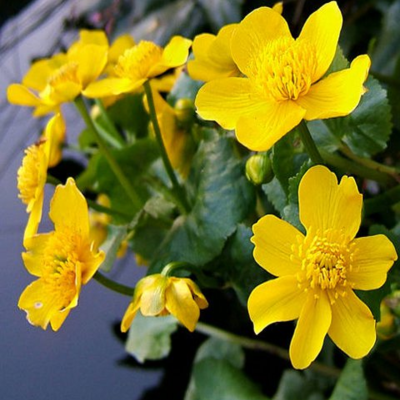

Plants for Pollinators highlights plants selected by the RHS as scientifically proven to tackle the declines in bees, butterflies and other pollinators.
Marigolds are always a lovely choice for the garden- even in loamy soil. The simple-yet-stunning beauty of these clusters of heart-shaped leaves and beaming golden flowers goes without saying- what’s more, they’re hardy, nectar-rich and even considered to be good luck in some parts of the country. Best placed in a sunny spot where they’ll give off a gorgeous glow!
- Type: Perennial
- Height: 25-50cm.
- Flowers: March-August
- Soil Requirement: Moist
- Light Requirement: Full sun
- Natural Habitat: Marshes, coast lines, river banks
- Also known as: Goldings, Kingcup, Publican’s Coat


Plants for Pollinators highlights plants selected by the RHS as scientifically proven to tackle the declines in bees, butterflies and other pollinators.
Best known as a common culinary herb, the Wild Marjoram has an extra use in providing some fanciful flavour to your garden! Not only does it provide fragrant foliage, but its small, spiked stems also produce clusters of small, rich Byzantine purple buds, blooming into paler pink petals, providing an interesting mixed palette that can compliment both light and dark flower arrangements!
- Type: Perennial
- Height: 30-60cm.
- Flowers: July-September
- Soil Requirement: Well-drained
- Light Requirement: Full sun
- Natural Habitat: Grasslands, farmland, chalky soil
- Also known as: Oregano, Grove Marjoram, Wintersweet
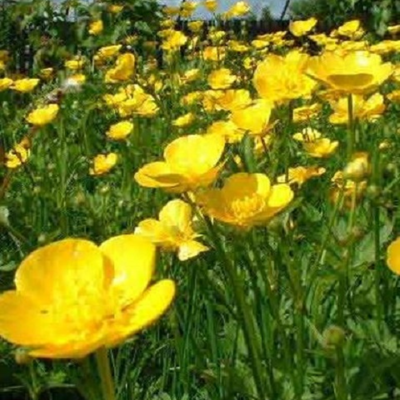

Plants for Pollinators highlights plants selected by the RHS as scientifically proven to tackle the declines in bees, butterflies and other pollinators.
The Meadow Buttercup is the tallest-growing of the buttercups, with a slight preference for damper ground. These bright and buttery, bowl-shaped blooms make an amazing addition to meadows!
- Type: Perennial
- Height: 30–90cm.
- Flowers: May-September
- Soil Requirement: Moist but well-drained
- Light Requirement: Full sun or partial shade
- Natural Habitat: Meadows, grasslands, road verges
- Also known as: Butter Daisy, Goldweed, Meadow Cup
Imagine a midsummer meadow rife with the Meadow Clary’s tall-growing spikes of striking indigo flowers! Though they’re now a rare sight in the wild, this handsome and hardy clump-growing plant is a sight to behold, on its own or at the back of a border. Noted for its soft foliage, which is aromatic when crushed.
- Type: Perennial
- Height: 80–100cm.
- Flowers: May-August
- Soil Requirement: Well-drained
- Light Requirement: Full sun
- Natural Habitat: Dry grassland, hay meadows, grassy paths
- Also known as: Meadow Sage
Choosing different wildflower plants by species gives you complete control over when you plant them, where you plant them and what the end result will be. And buying wildflower plug plants instead of seeds, means that you don't have to wait for them to germinate - perfect if speed is of the essence!
The full range of over 100 British wildflower plants species from Boston Seeds is available to buy online in trays of 25, 150 and 500 plug plants and all are available with nationwide delivery.
Want to learn more about the likes and dislikes of your favourite wildflower plants? Our handy wildflower species quide will tell you all you need to know - yours to download and keep for FREE.
Buy With Confidence

